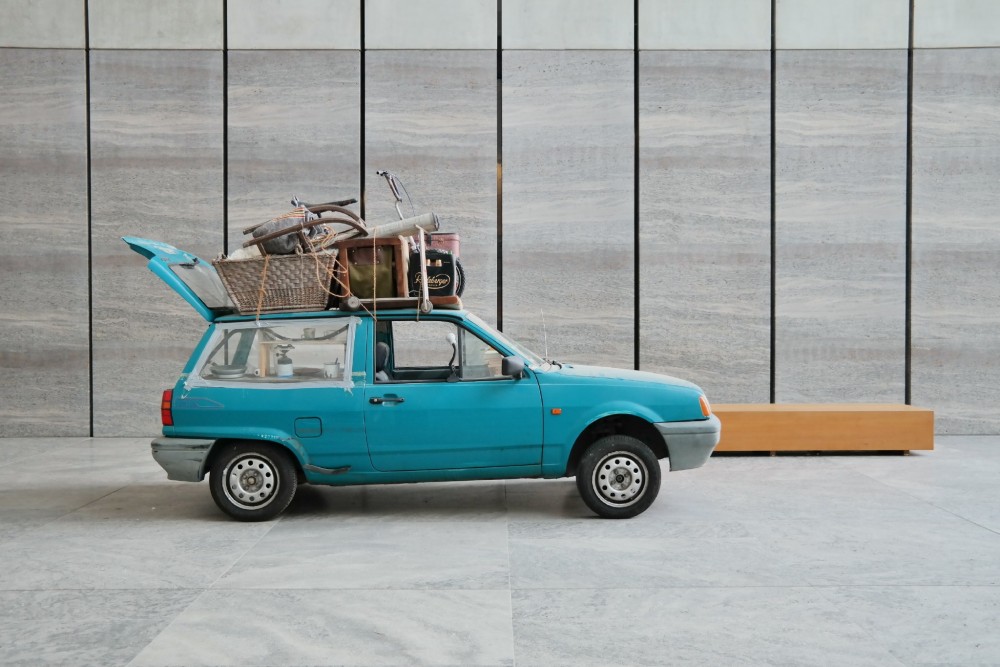
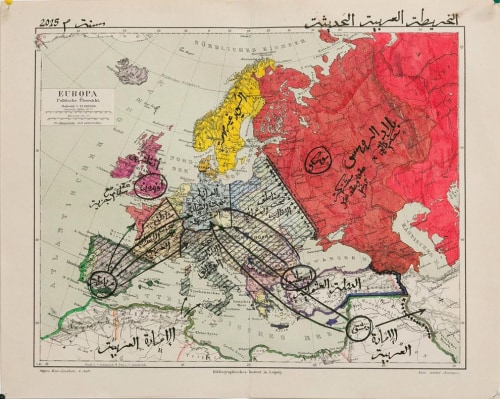
Manaf Halbouni, What If, 2015
Historically Germany has not been part of the Big Three destinations to which Middle Eastern artists travelled to study art (Egypt, France and Italy), yet it is no less significant, having nurtured waves of Syrian talent starting perhaps most famously with Marwan. Today, due to the on-going conflict, Germany is also home to nearly half a million Syrians. Among them is a new generation of artists relocating and adapting to new lives and new studio practices. We speak to Berlin-based Fadi Al-Hamwi and Dresden-based Manaf Halbouni, about their work, their experiences in Germany, and their studio routines.
The reasons artists have emigrated to Germany over the years have been diverse: some originally came to pursue postgraduate studies, remaining in Germany due to a combination of personal and political reasons. Others, like 35-year old Fadi Al-Hamwi, have applied for asylum, striving to find a balance between practicing their art and navigating a seemingly never-ending moment of transition as well as the battle against stereotyping. Then there are those, such as Manaf Halbouni, who came to Germany over a decade ago, yet remain eternal nomads, unable to reconcile with the idea of ‘home’.
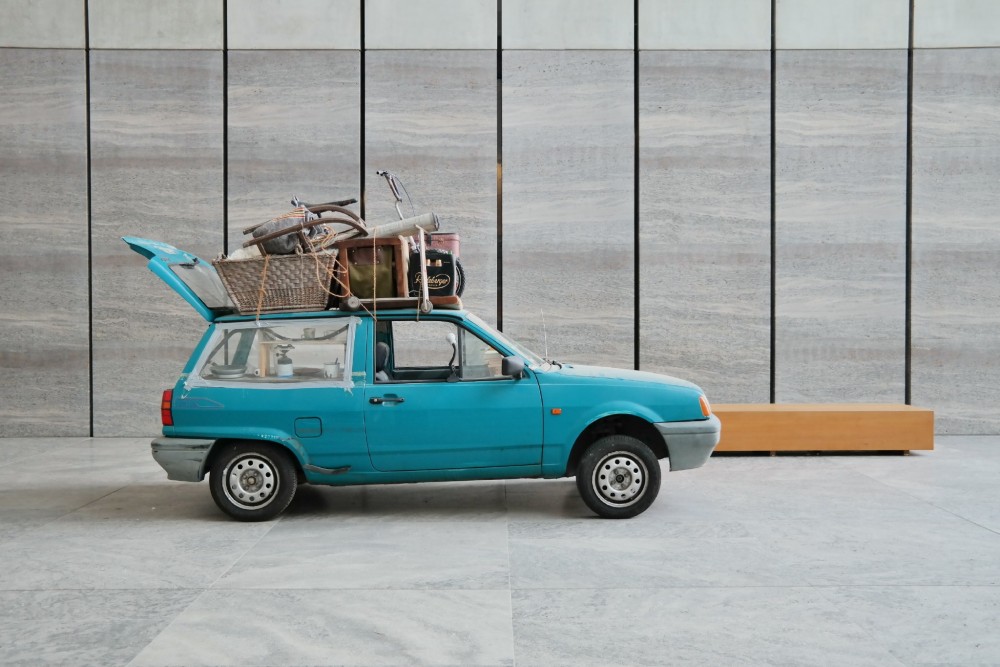
Manaf Halbouni, Nowhere is home Museum der Bildenden Künste Leipzig
Historically, Syrian artists travelled to Cairo, Rome and Paris to pursue studies in fine art, and Germany too hosted its share of art students. Over the last decade, the influx of Syrians living in Germany has, for obvious reasons, increased, resulting in steep changes to population demographics.
And, so, what of the experiences of these two artists? Both arrived in Germany for different reasons and at different times, and their practices cover widely different areas, though there are common threads that bind them – including an interest in material, as well as the relationship between belonging and not-belonging. Manaf Halbouni, for example, moved to Dresden in 2009 to study at the Academy of Art there, later working with Professor Eberhard Bosslet. His work deals with ideas of belonging in transience, often using the material of concrete, which he says “radiates both strength and power, as well as resistance to everything.” One of his best known works has been the Nowhere is Home series (2015), in which cars were filled with items and presented as sculptures, testament to the many modern nomads created by the Syrian war.
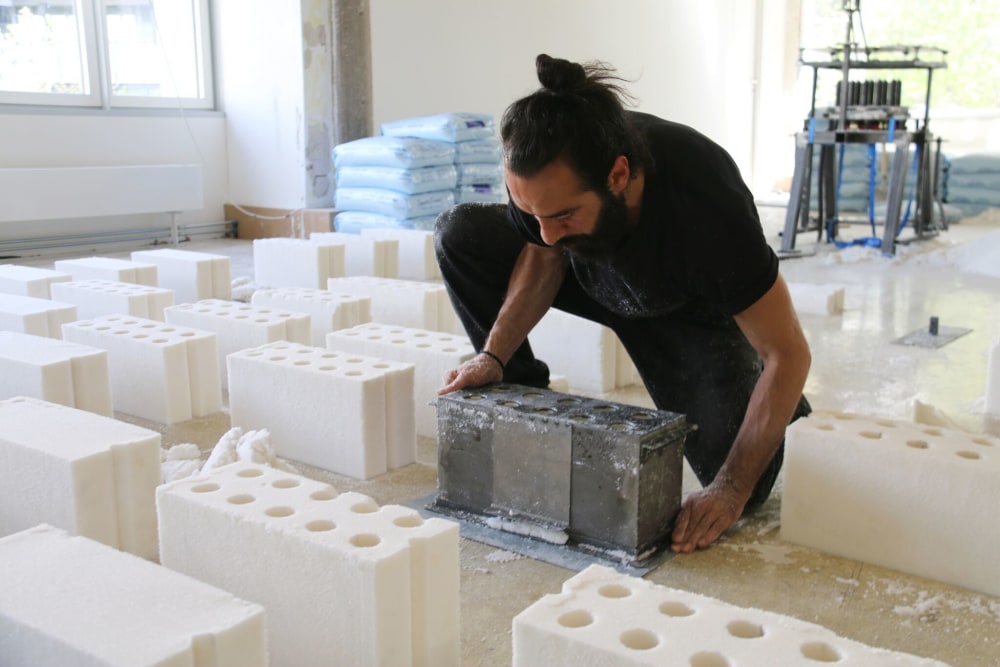
Fadi Al-Hamwi, Sugar Forever, 2019
Fadi Al-Hamwi also works with concrete, among other materials – most notably in Irrational loop of dust (2017), in which he cast an Oriental carpet out of concrete and asked viewers to walk over it. In doing so, it created a powerful testament to the erasure of one identity in the presence of another. Working across multiple media (painting, video and installation), he is interested in examining the intricate connections between cultures and histories, as through his performance Sugar Forever. By producing building bricks in the shape of those used in Syria, but out of sugar, he draws on the complex history of sugar itself – its role in the international salve trade, the economy, as well as the role of Germany as a producer of weapons, even though it is now his home. “It’s sweet,” comments Al-Hamwi, “yet at the same time, it is poison.”
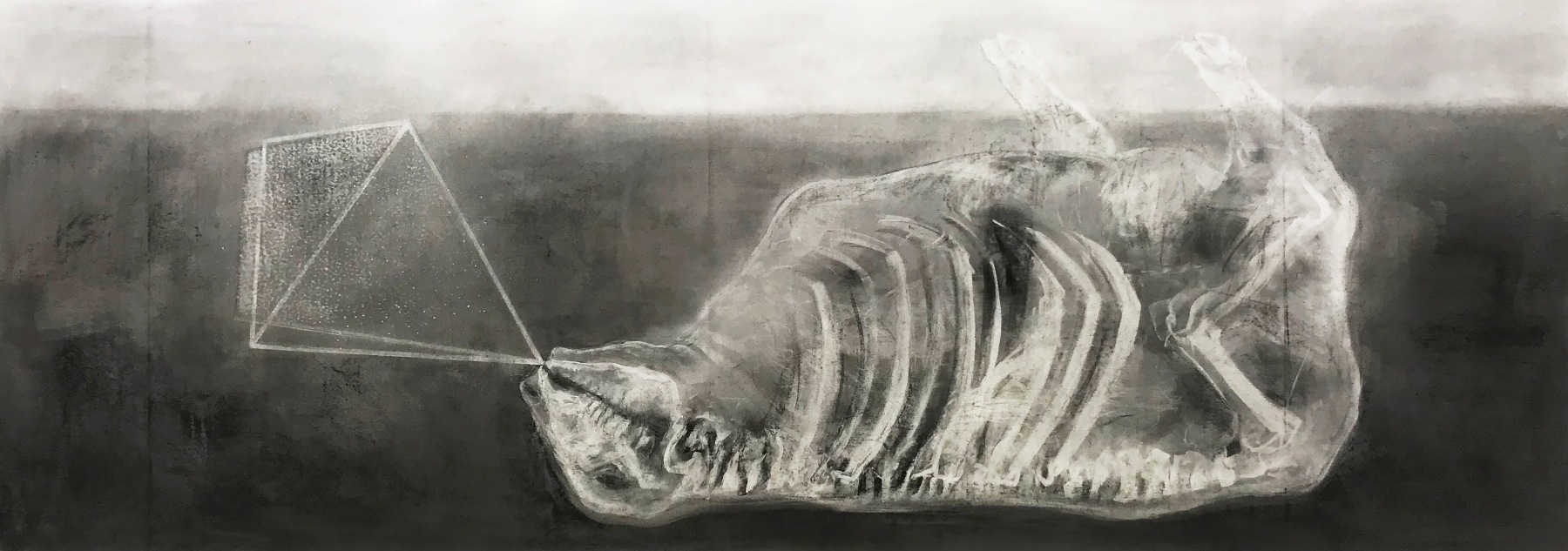
Fadi Al-Hamawi, Spoils, 2017
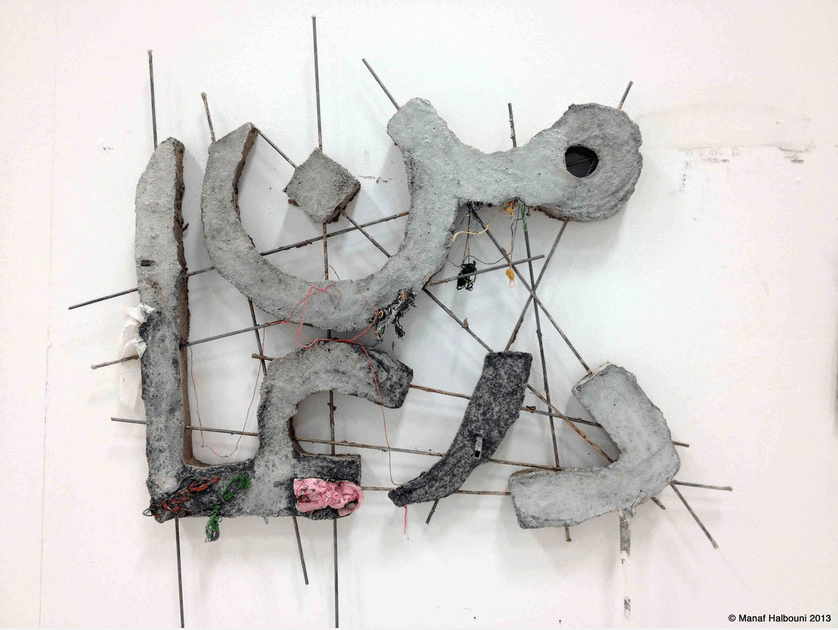
Manaf Halbouni, From Deraa "Men Daraa," 2013
Berlin: The Centre of Individuality?
Both Al-Hamwi and Halbouni have expressed the view that the environment of freedom and innovation that exists in Berlin, is due, largely, to its youthful population. “Berlin is full of young people working on new projects, full of life and ideas. It is unique in its openness – it lets you be yourself, explains Al-Hamwi. “However, I would say this is unique to Berlin, not necessary Germany as a whole. This is probably down to the city’s history – the violent shocks of revolution and war have resulted in a sense of liberation and experimentation. In turn, this provides the freedom to focus on who you are and how you want to be, without being governed by social expectations in the same way that I might be in, say, Syria and even other European cities.”
The liberty of a big city, however, can also come at a price, warns Halbouni. “From where I am in Dresden, I look at Berlin and I see a lot of lost souls – particularly in the arts and culture scene,” he says. “So many people arrive there full of hopes and dreams but these can just be illusions. Don’t destroy yourself chasing some sort of elusive future. Having said that I don’t think this is necessary unique to Berlin alone – I think any large city has the same problem, be that London, Paris, New York and so on. People can have a bit of a reality shock coming to terms with expectation versus reality.” Adds Al-Hamwi: “Berlin is really inspiring and nice but at the same time, I do miss the family structure. Berlin is more about individuality and I miss family life in Syria. I love how, when you talk to the really young, and the really old, you can learn so much about life and gain new perspectives.”
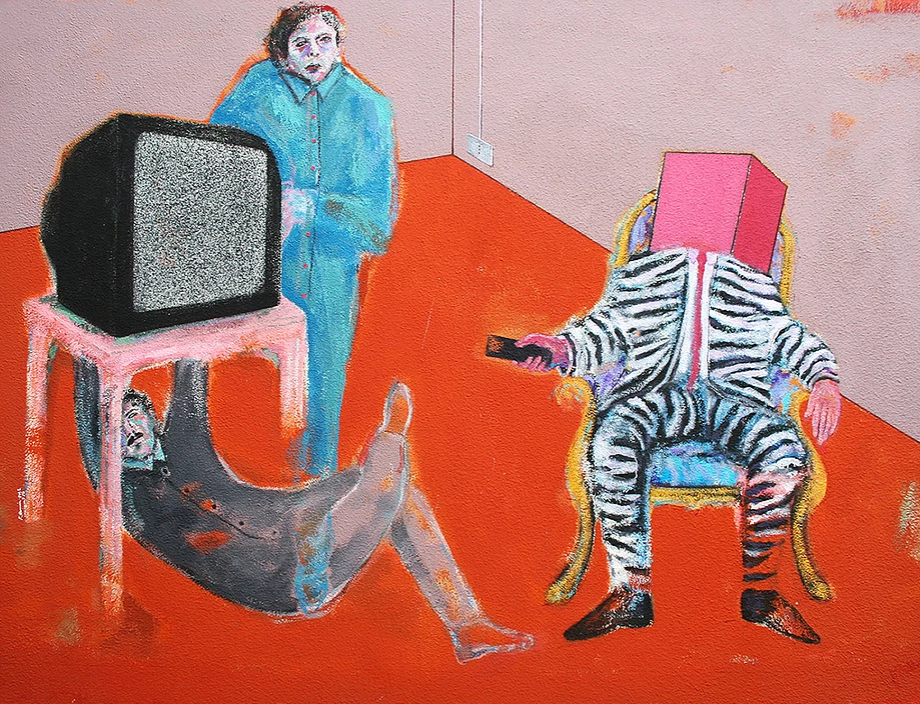
Fadi Al-Hamawi, Mind Static, 2012
Career Challenges and Support
For most artists, the greatest challenges come from finding support and finding for their work. For those relocating to new countries, there come extra hurdles of managing the resettlement process, as well as rebuilding networks. “The challenges have been numerous,” says Al-Hamwi. “On a practical level, there is finding where one can get tools and materials. How and where do I go to cut metal, or do woodwork, for example. Then there has been the challenge of getting into the right state of mind to make art – that has been the most challenging, to be honest. It takes a lot of patience.”
And then there is the human element, for, says Halbouni, “the biggest challenge, always, is finding enough people to believe in you and your ideas and support you. I’m not talking about giving you money, but moral support and helping connect and introduce you to likeminded people I’ve been very lucky in that I’ve been able to build a great network in Dresden over the last 11 years. You have to find people who believe in an idea and are ready to take a risk.”
The other factor, of course, is financial support. Al-Hamwi cites projects such as his Sugar Forever and is candid about “the challenge of funding,” explaining that “a lot of my work is fairly non-commercial, so it’s difficult to make a living out of it, but I have to keep doing what I really believe in.” Adds Halbouni: “I came to Germany in 2008, at a time that nobody knew anything about Syria. I paid for everything myself and worked to fund my studies. Germany has taught me to be tough, to fight for my dreams.”
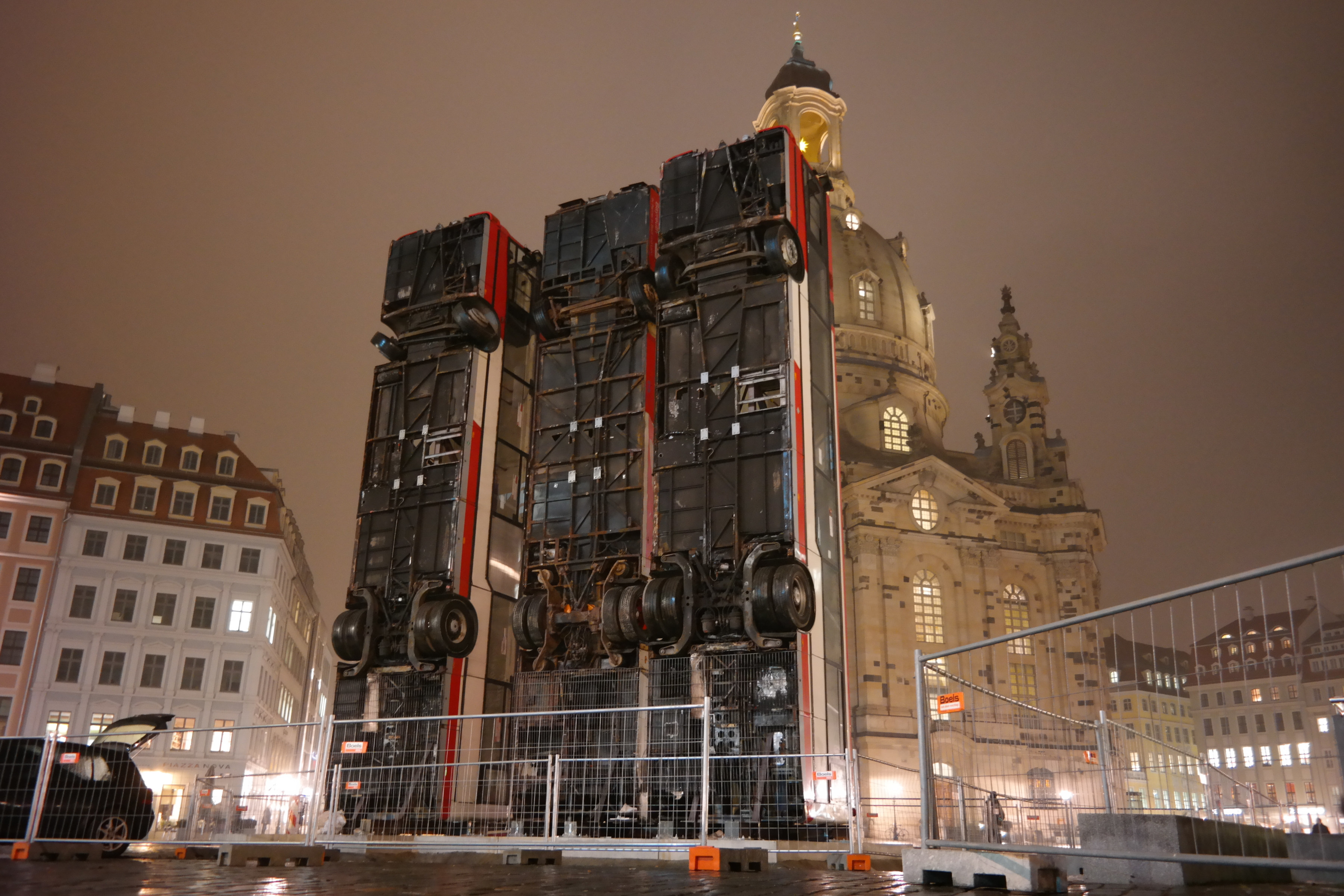
Manaf Halbouni, Monument Dresden Blick auf Frauenkirsche
Studio Life
To have a space of one’s own, to quote Virginia Woolf, is integral to creative production. To relocate to a new country as a creative, then, implies not just resettling into a new ‘home’, but the two-fold challenge of finding two such homes – to live in and to work in. “I’ve had a few studios in my time here,” admits Al-Hamwi. “I’m still exploring the same ideas that I was when studying in Damascus – the topics may be different, and the places I exhibit my work will have changed, but I’m still interested in society and its many issues. So, while I wouldn’t say I have a specific studio routine, since it depends very much on what I’m working on, the new cultural context has certainly had an effect. It’s an interesting mix – observing and learning a new cultural way of life and how that makes itself felt in your work, but also not losing your originality, your aim, and what makes you you.”
The studio experience for Halbouni is quieter. “Dresden being some way away from Berlin (about 200 kilometres), and even then, it wasn’t my first choice,” he says. “Originally I was planning to go to Hamburg, but that didn’t work out. Dresden is where my mother is from, so in that sense, it was a familiar choice. As such, my work deals more with the question of ‘where is home’ than any identity-related questions.” Those large-scale sculptural installations such as the cars of Nowhere is Home allow Halbouni to ask questions such as: “What objects do you choose to say represent home? What do you take with you? What do you leave behind?”
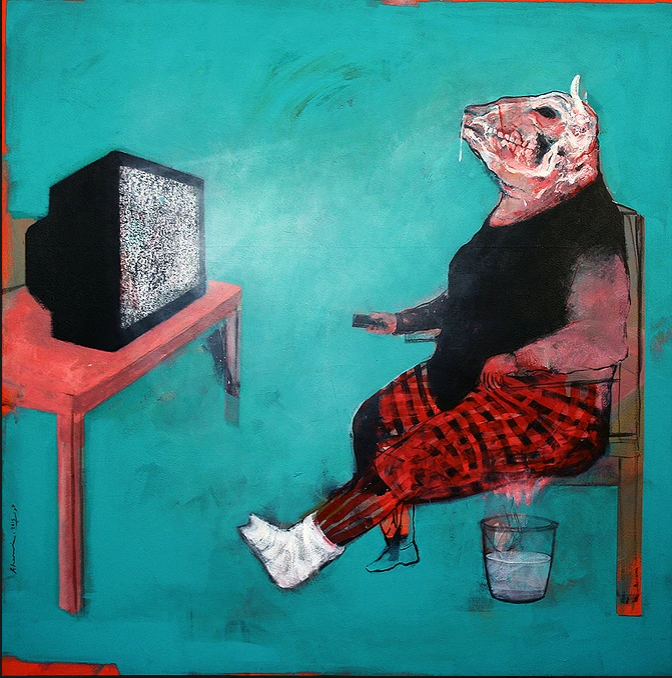
Fadi Al-Hamwi, TV, 2014
‘Syrian’ or ‘Artist’?
“It can get really tiring,” admits Al-Hamwi. “There is always the word ‘Syrian’ before ‘artist’. Why do I have to be a Syrian before I am an artist? It takes away from you as an individual. How do you fight that stereotype?” The question, then, is how can one integrate and settle down if one is constantly reminded of being different? “It’s tricky to say clearly when I felt ‘settled’ in Germany,” he continues. “An asylum scenario is different from the more normal one of wanting to move to a new place and thinking ‘OK, I’m settling here’. The element of choice, I suppose, is taken out of my equation. The process of endless paperwork is draining too – getting my residency and asylum sorted took a really long time, and that of course affects your state of mind. It took a long time to process everything happening to me. I would say that in the last eight months or so I’ve started to feel like myself again, while working on Sugar Forever. Now I’m working again the way I’m supposed to be working.”
For Halbouni, the issue is more philosophical: “I still don’t feel as if I’ve settled anywhere – but that is a problem I have with myself,” he says. “As I’m half German, I’m always living between worlds. In Syria I was called ‘the German’ and in Germany it’s the opposite. At the moment, I’m a hybrid, and it’s good like this, because I can think in both directions. I don’t really care much about the notion of national identity. I belong everywhere.”
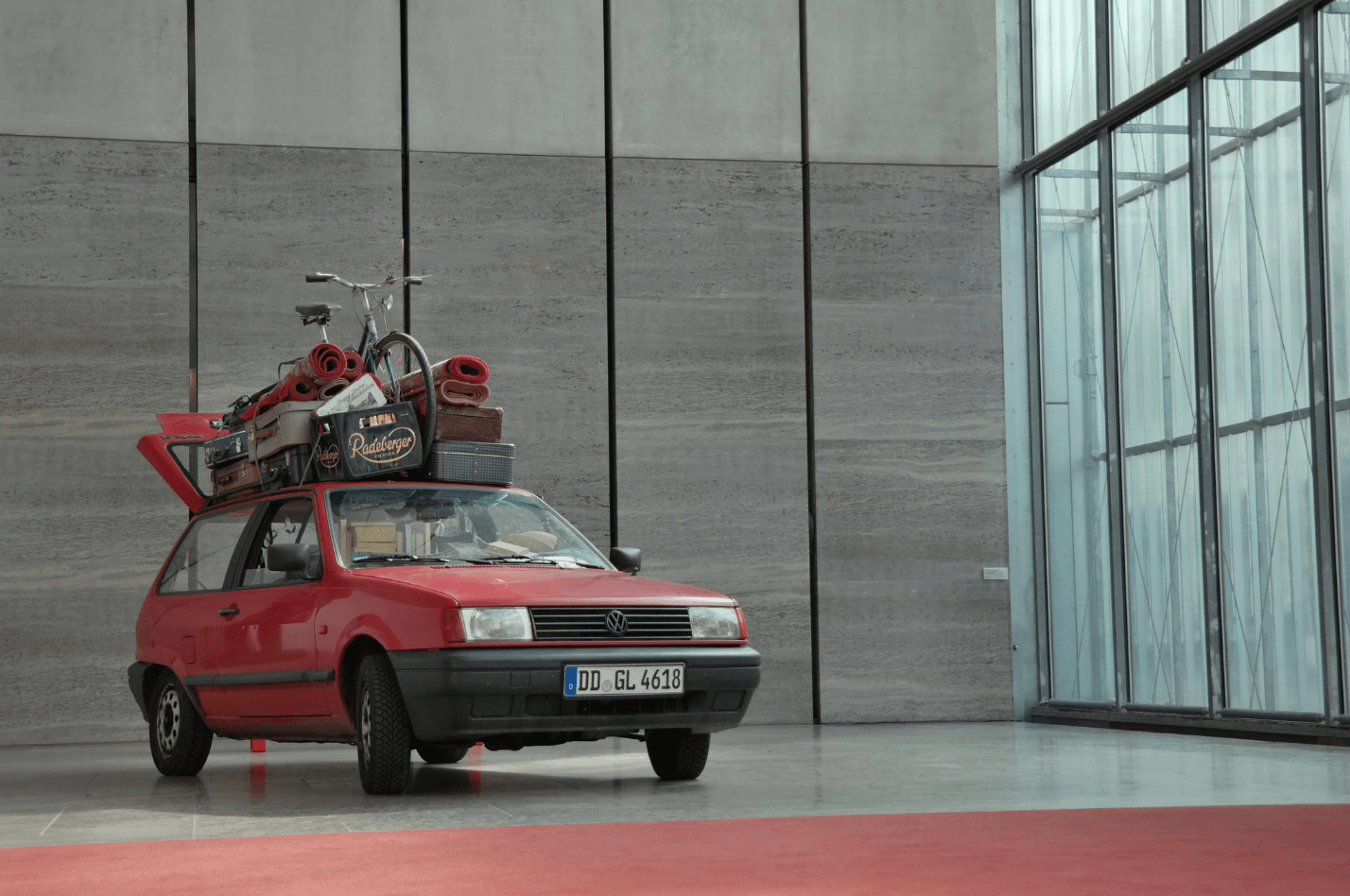
Manaf Halbouni, Nowhere Is Home, 2015
About the artists:
Manaf Halbouni's artistic practice is informed by a participatory approach that spans a wide range of media and often incorporates ordinary objects and materials. In his widely acclaimed memorial piece Monument, Halbouni put three buses, upended, in front of Dresden's Frauenkirche (Church of our Lady). The square in front of the Frauenkirche is symbolic, as the church was destroyed during the bombing of Dresden at the end of World War II. Halbouni's installation not only alluded to the ravages of war but also created a symbol of hope for war-torn countries, which, like the city of Dresden, may one day rise again from the ashes.
Manaf Halbouni (1984, Damascus, Syria) lives and works in Dresden, Germany. Halbouni studied sculpture at the Academy of Fine Arts Damascus and the Hochschule für Bildende Künste in Dresden (Dresden Academy of Fine Arts) where he attended the master class of Prof. Eberhard Bosslet. Halbouni was awarded a.o. with the Marion Ermer Award 2016 from the Museum der Bildende Künste Leipzig and most recently participated in the FFO Artist in Residence Program (Foreign Ministry of the Federal Republic of Germany, 2018). Halbouni has had numerous solo and group exhibitions.
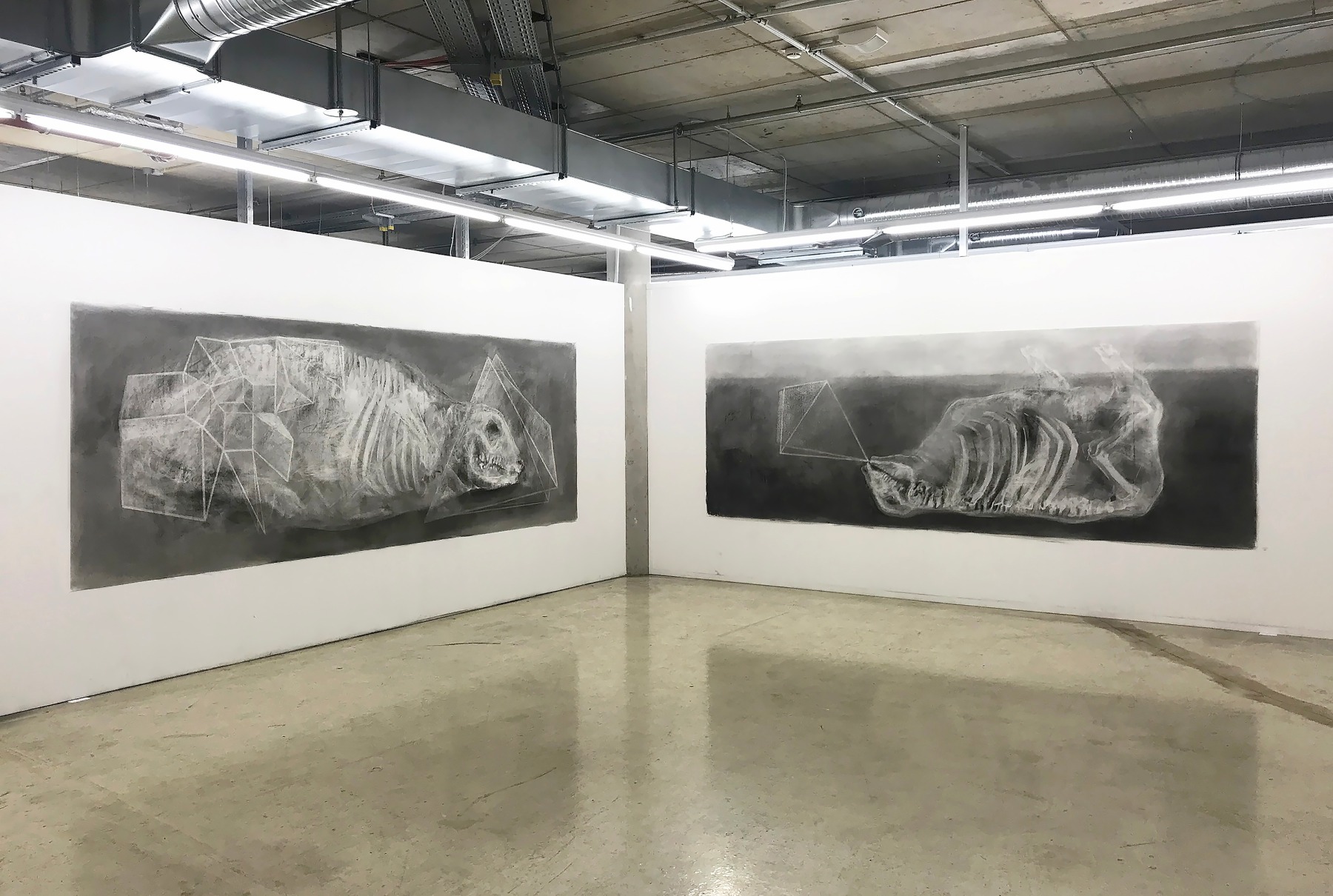
Fadi Al-Hamawi, Spoils II, 2017
Fadi Al-Hamwi’s body of work shows a preoccupation with translating the human experience of war, rather than producing art with a political message. His art has explored the lack of humanity in the Syrian war, exposing men and woman stripped to the structure of their bones. He gives a face to war and has offered a fresh and human perspective on the conflict.
Born in Damascus (1986), Al-Hamwi graduated with a Bachelor’s degree in Fine Arts, majoring in oil and mural paintings in 2010 from the Damascus University. Al-Hamwi is a painter, video and installation artist, participated in numerous collective exhibitions and produced installations in several galleries and studios in Damascus and Beirut. He has also shown his artwork at many collective exhibitions in Damascus, Beirut, Dubai, Canada, London, Washington, Germany and Copenhagen.